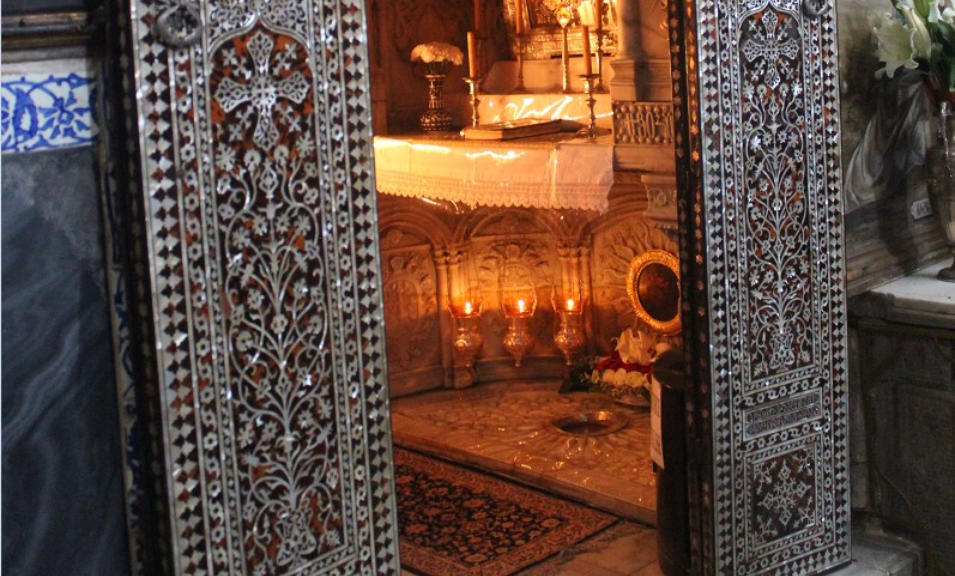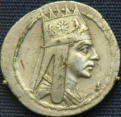

Armenian Jerusalem




“Kulkhateer”, StJames Cathedral

While
many
Armenians
know
that
the
Armenian
Quarter
in
Jerusalem’s
Old
City
covers
one-sixth
of
the
city,
many
Armenians,
including
even
some
living
in
Jerusalem,
don’t
know
the
many
Armenian-related
facts which make our presence in the Holy City so significant.
Here are ten such salient facts.
1.THE ST. JAMES ARMENIAN CATHEDRAL.
The
name
is
wrong.
The
actual
name
of
the
cathedral
is
Sts.
Jameses
because
two
saints
bearing
that
name
are
buried
in
the
cathedral.
The
first
is
St.
James
(known
as
‘Klkhatir’
to
Armenians),
the
brother
of
St.
John.
The
second
is
St.
James,
the
brother
of
Christ.
He
was
the
first
bishop
of
Jerusalem.
The
“first”
St.
James
was
beheaded
by
Herod
Agrippa.
While
his
head
is
buried
in
the
cathedral,
the
rest
of
his
body
is
in
distant
Santiago
de
Compostella
in
Galicia,
in
northwest
Spain.
How
the
saint’s
body
wound
up
in
that
remote
spot
is
another
story,
if
not
fable
and
legend.
The
“St.
James”
is
popular
because
it’s
easier
to
pronounce and to write than Sts. Jameses.
2.THE UNKNOWN SOLDIER
The
first
known
monument
to
the
Unknown
Soldier
was
built
by
the
Armenians
in
the
city’s
Musrara
neighborhood,
northwest
of
the
city
walls.
It
is
located
in
the
funerary
chapel
of
martyr
St.
Polyeucte,
an
Armenian
officer
of
the
Roman
XII
legion.
The
6.30
meter
by
3.90
meter
mosaic
is
made
up
of
forty
medallions
which
contain
storks,
partridges,
geese,
ibis,
eagles,
and
ostriches
and
interspersed
flowers.
The
mosaic
includes,
in
Armenian,
the
inscription:
“To
the
memory,
and
for
the
salvation,
of
all
those
Armenians
whose
names
are
known
to
the
LORD.”
It’s
believed
the
mosaic
was
made
sometime
between
527 to 565 in the age of Emperor Justinian of Byzantium.
3.THE CITY WALL WAS BUILT BY AN ARMENIAN
Maymar
Sinan
(1489-1588),
the
Armenian
engineer-architect
from
the
Agirnas
village
near
Caesarea,
was
responsible
for
building
the
wall.
As
chief
architect
of
the
Ottoman
palace,
he
was
in
charge
of
the
construction
of
more
than
300
structures—mosques,
hospitals,
public
kitchens,
schools,
mausoleums,
baths,
palaces,
mansions,
bridges,
aqueducts,
and
caravansaries.
He
circled
(in
the
mid-1530s)
Jerusalem
with the 4 kilometer walls including 34 watchtowers and seven gates.
For
centuries
the
Turks
denied
Sinan’s
Armenian
origin.
In
recent
years
they’ve
somewhat
relented
and
say
that
he
was
Christian.
Evidence
that
Sinan
was
Armenian
is
the
letter
he
wrote
to
the
sultan
asking
him
not
to
exile
his
family
to
Cyprus
when
the
Turks
were
shipping
the
Armenians
of
his
hometown
to
the
Mediterranean island.
4.THE SECURITY DECREE.
At
the
main
entrance
to
the
Armenian
Convent
there’s
an
Arabic
writing
etched
in
stone.
It’s
a
declaration
which
guarantees
the
integrity
of
the
Armenian
holy
places
and
exempts
Armenians
from
head
tax.
Many
people,
including
professional
guides,
wrongly
believe
the
words
are
those
of
Prophet
Mohammed
granting
protection
to
the
Armenians
of
the
Holy
Land.
Others
believe
the
words
belong
to
Omar
Ibn-Khattab,
the
conqueror
of
Jerusalem.
Still
others
maintain
that
Salah
Eddin
Ayoubi
or
Ottoman
Sultan
Abdul-Aziz
is
the
author
of
the
decree.
However,
the
actual
guarantor
was
Egyptian
Sultan
al
Zaher
Abou
Said
Chakmak
(1437).
Some
scholars
believe
he
was
of
Armenian
origin
and
was
related
to
Armenians
who
were
prominent in the Fatimid dynasty of Egypt.
5.QUEEN MELISENDE.
Although
Queen
Melisende
of
Jerusalem,
the
greatest
Crusader
female
personality,
had
an
Armenian
mother
and
strengthened
the
Armenian
presence
in
the
Holy
Land,
few
people
know
about
her
or
that
she
is
buried
in
the
Church
of
Virgin’s
Tomb
(“Asdvadzamayr”
in
Armenian),
adjacent
to
the
Garden
of
Gethsemane.
Her
mother
(Queen
Morphia,
the
second
Armenian
queen
of
Jerusalem)
is
also
buried
in
the
underground
church
at
the
foot
of
Mount
of
Olives.
Queen
Melisende
was
born
(1105)
and
raised
in
Urfa/Edessa.
She
came
to
Jerusalem
with
her
family
at
the
age
of
ten
when
her
father,
the
ruler
of
Urfa,
became
King
Baldwin
II,
the
second
Crusader
king
of
Jerusalem.
Her
mother
tongue
was
Armenian
and
she
received Armenian upbringing while in the Armenia city of Urfa.
Queen
Melisende
was
the
eldest
of
four
sisters.
She
was
tall,
had
dark
eyes
and
brows.
She
was
described
by
a
contemporary
chronicler
as
“beautiful,
wise,
sweet
and
compassionate”.
Others
described
her
as
a
willful
ruler
who
didn’t
suffer
fools
gladly.
She
was
passionate
about
horse
riding
and
was
resented
by
some
Crusaders
because
of
her
gender
and
her
half-Armenian
origins.
While
married
to
Count
Fulk,
she
shared
the
throne
with
her
husband.
After
the
early
death
of
her
husband
during
a
hunting
accident,
she
became regent and sole ruler.
A
talented
diplomat,
she
avoided
conflict
with
Muslims.
She
was
interested
in
the
arts
and
in
urban
development.
The
Holy
Sepulcher
was
reconstructed
through
her
intercession.
She
also
built
the
Bethany
Abbey
for
nuns,
the
St.
Anne
Church,
three
covered
bazaars,
and
a
scriptorium
for
the
production
of
illuminated
manuscripts.
She
was
also
instrumental
in
the
expansion
of
the
Armenian
Quarter.
Melisende
spread
her
influence
through
the
arranged
dynastic
marriages
of
her
two
sisters
to
Crusader
royalty.
She
died in 1161 following a stroke.
6.WHEN WERE THE ST. JAMES CATHEDRAL AND CONVENT BUILT?
The
original
cathedral,
which
was
destroyed
by
the
Persians
in
the
7th
century,
was
built
in
the
4th
century.
The
present
building
dates
from
the
Crusader
era
and
is
in
many
ways
a
replica
of
the
Haghpad
Cathedral
in
Armenia.
The
convent’s
roots
also
go
back
to
the
Crusader
era.
However,
most
of
the
convent
land
were
acquired
and
developed
in
the
17th
and
18th
centuries
through
the
donations
of
wealthy
Armenians
in
the
diaspora
and
pilgrims.
A
number
of
prominent
buildings
(Gulbenkian
Library,
Sts.
Tarkmanchats
Secondary
School,
Jarankavorats,
the
defunct
printing
press)
were
built
in
more
recent
times. The seminary, across from the main entrance to the convent, was built in the 1970s.
7.CHRISTMAS DAY ON JAN. 18.
Why
do
Armenians
of
Jerusalem
celebrate
Christmas
on
Jan.
18
when
the
Armenian
Apostolic
Church
celebrates
that
feast
on
Jan.
6?
Depending
on
the
source,
there
are
two
answers:
the
Armenian
Church
of
Jerusalem
uses
a
different
church
calendar
from
that
used
by
the
Armenian
Apostolic
Church.
The
second
explanation?
There
was
a
time,
nearly
two
centuries
ago,
when
Jerusalem
Armenians
and
the
local
Greek
Church
celebrated
Christmas
on
Jan.
6.
This
resulted
in
huge
crowds
of
pilgrims
(Armenian,
Greek,
and
Russian)
crammed,
at
the
same
time,
in
the
Nativity
Church
to
celebrate
Christ’s
birth.
The
simultaneous
celebrations
resulted
in
a
cacophony
of
competing
hymns,
discomfort
for
all
and
in
the
occasional
fight.
To
resolve
the
problem,
the
Armenians
delayed
their
celebrations
to
Jan.
18
but
in
lieu
received
certain
rights from the Greek Patriarchate.
8.THE JERUSALEM CROSS.
The
Latin
(Catholic)
Patriarchate
of
the
Holy
Land
has
a
distinctive
cross
which
is
known
as
the
Jerusalem
Cross.
It
comprises
of
a
square
cross
with
four
smaller
crosses
over
and
below
its
horizontal
arms.
Although
the Catholic Patriarchate has made it its “logo”, the cross is of Armenian origin.
In
Eastern
Armenia,
long
before
the
arrival
of
the
Crusaders
to
the
Middle
East,
Armenians
etched
the
identical
cross
on
rocks,
churches
and
monastery
walls.
The
four
small
crosses
symbolized
the
four
disciples
who
wrote
the
New
Testament.
These
ancient
crosses
can
still
be
seen
in
the
Republic
of
Armenia.
When
following
the
Seljuk
invasions
a
significant
percentage
of
Armenians
moved
to
Cilicia,
they
took
the
cross
design
with
them.
A
number
of
Armenian
Cilician
noblemen
adopted
it
as
their
flag.
The
Crusaders
saw
the
cross
while
passing
through
Cilicia
on
their
way
to
the
Holy
Land.
After
conquering
Jerusalem,
they
declared
it
their
flag.
In
time
the
Latin
Patriarchate
of
Jerusalem
appropriated
the
cross
as its own.
Another
proof
of
the
cross’s
Armenian
roots:
across
from
the
entrance
to
the
Sts.
Jameses
Cathedral,
visitors
can
see
more
than
half-dozen
khachkars
(stone-crosses)
embedded
in
a
high
wall.
They
have
four
small
crosses
around
them.
One
of
these
khachkars
has
A.D.
965—more
than
130
years
before
the
arrival
of
the Crusaders to Jerusalem.
9.FOUR THOUSAND MANUSCRIPTS.
The
second-largest
collection
of
Armenian
illuminated
manuscripts
is
at
the
modest
St.
Thoros
Church
located
in
the
lay
residential
district
of
the
Armenian
Convent.
The
4,000-manuscript
collection,
which
includes
works
by
such
masters
as
Toros
Roslin
and
Sarkis
Pitzak,
is
the
second-largest
after
the
one
in
Yerevan (10,500). At one time there were 100,000 Armenian illuminated manuscripts: most were burned by
the Turks.
10.THE LAST QUEEN OF ARMENIA
After
the
fall
of
Sis
in
1375,
King
Levon
V
(the
last
king
of
Armenia),
his
family
and
his
retinue
were
taken
prisoners
by
the
Memluks
and
incarcerated
in
Egypt.
Years
later,
when
several
European
noblemen
paid
the
ransom
demanded
by
the
Memluks,
King
Levon
was
released.
After
acting
as
governor
of
Madrid
for
a
few
years,
he
settled
in
Paris
as
a
permanent
guest
of
the
king.
During
the
years
King
Levon
was
incarcerated
in
Egypt,
his
wife
Mariyoon
(the
last
Armenian
queen)
and
daughter
Penna
settled
in
the
Armenian
Convent
of
Jerusalem
where
they
died
a
few
years
later.
They
were
buried
side
by
side,
next
to
the
pillar
facing
the chapel of St. James (“Klkhateer) northwest of the cathedral.
During
his
“retirement”,
King
Levon
tried
to
arrange
peace
between
France
and
England
hoping
to
launch
another
Crusade
after
the
two
neighboring
countries
had
made
peace.
But
the
kings
of
France
and
England
were
not
interested
in
a
peaceful
solution
to
their
conflict.
King
Levon
died
in
1393
in
Paris
and
was
buried
in
the
same
mausoleum
where
French
royalty
were
buried.
After
the
French
Revolution,
the
royal
remains
were
reburied
at
the
St.
Denis
Cathedral
outside
Paris.
More
than
a
century
after
King
Levon’s
death,
King
James I of England, who was a distant relative, acquired the title of “King of Armenia”.
(June 29, 2017)






















